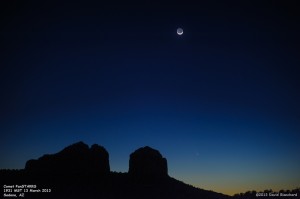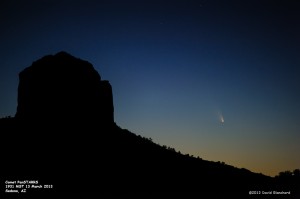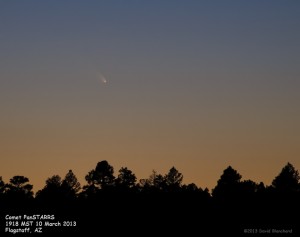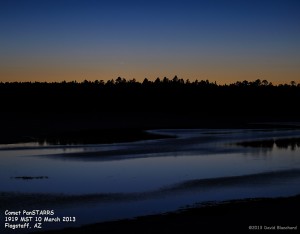Last week the crescent moon was very close to Comet PanSTARRS and made for a fabulous image. With the passage of a week the moon is now past first quarter and becoming very bright.
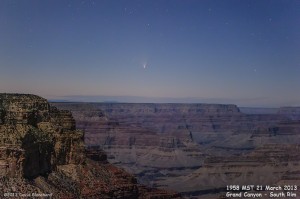
With this in mind a trip to the South Rim of the Grand Canyon was warranted. The combination of the comet above the rim of the canyon and the moon filling the inner canyon with soft light was extraordinary.
The comet is now moving away from the sun and gradually growing dimmer. Hopefully it will remain bright enough to get some photographs as it passes through the constellation Andromeda and near M31/Andromeda Galaxy in early April.
